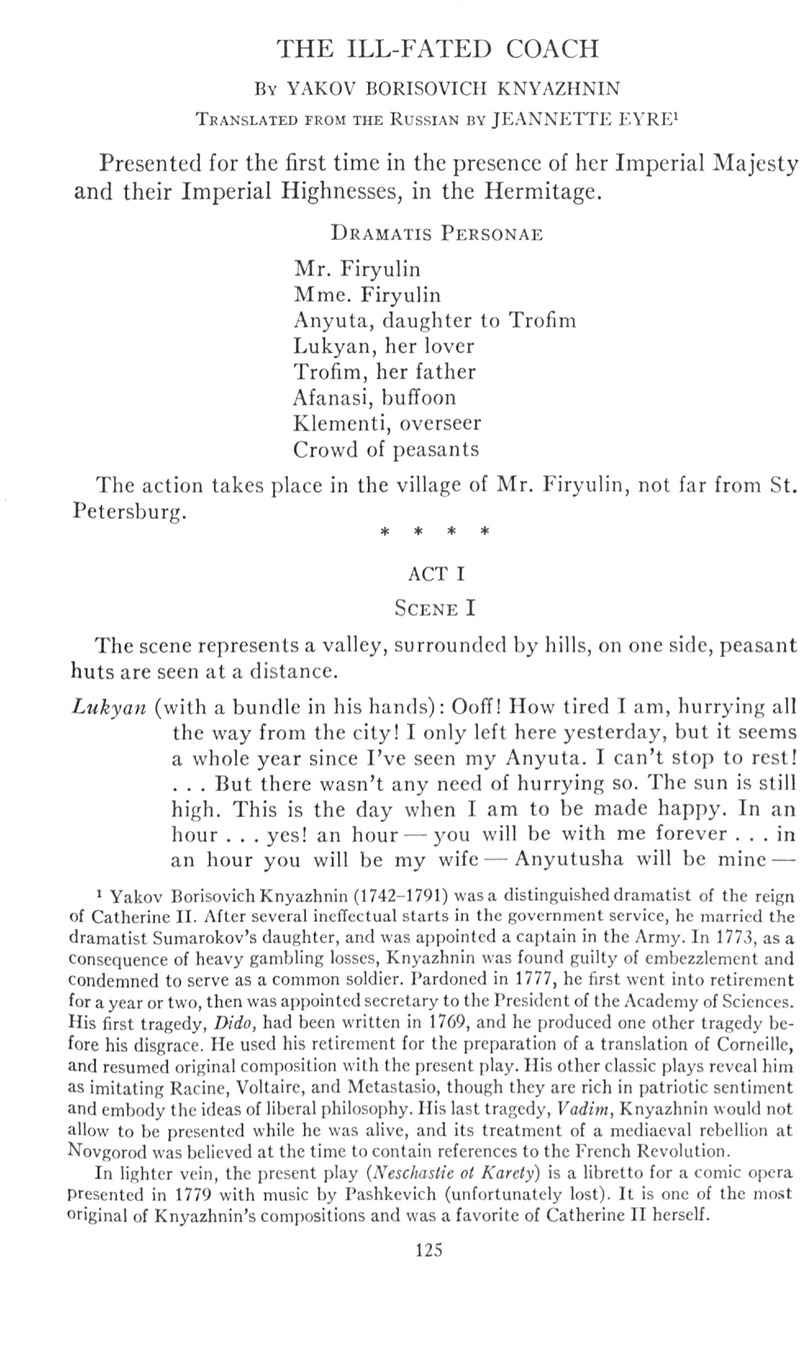No CrossRef data available.
Article contents
The Ill-Fated Coach
Published online by Cambridge University Press: 05 June 2017
Abstract

- Type
- Other
- Information
- Copyright
- Copyright © Association for Slavic, East European, and Eurasian Studies 1944
References
1 Yakov Borisovich Knyazhnin (1742-1791) wasa distinguished dramatist of the reign of Catherine II. After several ineffectual starts in the government service, he married the dramatist Sumarokov's daughter, and was appointed a captain in the Army. In 1773, as a consequence of heavy gambling losses, Knyazhnin was found guilty of embezzlement and condemned to serve as a common soldier. Pardoned in 1777, he first went into retirement for a year or two, then was appointed secretary to the President of the Academy of Sciences. His first tragedy, Dido, had been written in 1769, and he produced one other tragedy before his disgrace. He used his retirement for the preparation of a translation of Corneille, and resumed original composition with the present play. His other classic plays reveal him as imitating Racine, Voltaire, and Metastasio, though they are rich in patriotic sentiment and embody the ideas of liberal philosophy. His last tragedy, Vadim, Knyazhnin would not allow to be presented while he was alive, and its treatment of a mediaeval rebellion at Novgorod was believed at the time to contain references to the French Revolution.
In lighter vein, the present play (Neschastie ot Karety) is a libretto for a comic opera Presented in 1779 with music by Pashkevich (unfortunately lost). It is one of the most original of Knyazhnin's compositions and was a favorite of Catherine II herself.


